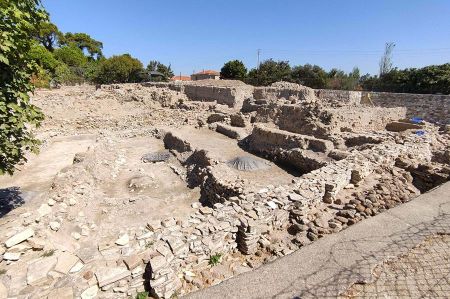Roman port Limantepe near Urla will be resurrected
- Written by Portal Editor
Decades ago, a prehistoric settlement from the Bronze Age was found near the city of Limantepe, now Urla, on the west coast of Turkey, which also had an artificial, ancient harbour.
The settlement is said to have been founded around 6,000 years ago. A few years later, a mighty fortification wall was built, but like the entire settlement, it sank into the sea. Over time, the settlement had changed significantly, and one of the oldest artificial harbours in the Aegean was created here.
Artifacts are in the Archaeological Museum of Izmir
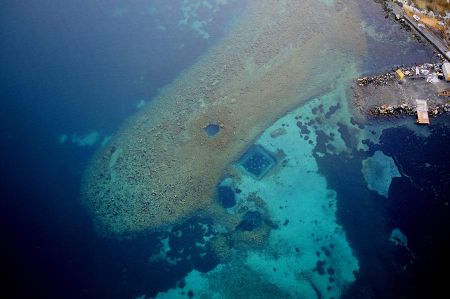 The underwater finds discovered include vessels and urns that are thought to have arrived by sea from ports in Greece and Cyprus, perhaps even the Black Sea. The archaeological site was discovered in 1950 by Ekrem Akurgal and its exploration was continued from 1979 by an international team of archaeologists on land and underwater. Many of the discovered artifacts are currently on display at the Izmir Museum Archaeological Museum. As in Klazomenai, the coast has changed significantly over the centuries.
The underwater finds discovered include vessels and urns that are thought to have arrived by sea from ports in Greece and Cyprus, perhaps even the Black Sea. The archaeological site was discovered in 1950 by Ekrem Akurgal and its exploration was continued from 1979 by an international team of archaeologists on land and underwater. Many of the discovered artifacts are currently on display at the Izmir Museum Archaeological Museum. As in Klazomenai, the coast has changed significantly over the centuries.
Examinations of the soil ultimately revealed three cultural layers. The lowest layer belongs to the Early Bronze Age and dates back to the 3rd millennium BC. Three phases of this layer have been excavated so far and the number of phases is expected to continue to increase. The second cultural layer consists of five phases belonging to the Middle Bronze Age, dating from the first half of the 2nd millennium BC. BC.
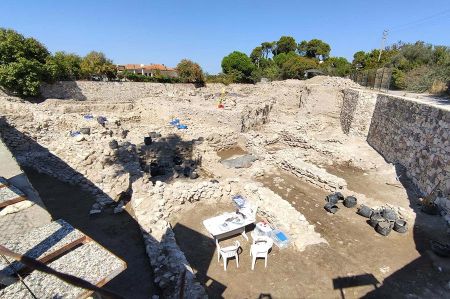 Finds from these two early periods show cultural relationships, particularly with the finds from the nearby prehistoric sites of Tepekule and Bayraklı within the city of İzmir (which later formed the core of "Old Smyrna"). In Panaztepe, influences from Central Anatolia were also found at the mouth of the Gediz River (called Hermus during the classical period).
Finds from these two early periods show cultural relationships, particularly with the finds from the nearby prehistoric sites of Tepekule and Bayraklı within the city of İzmir (which later formed the core of "Old Smyrna"). In Panaztepe, influences from Central Anatolia were also found at the mouth of the Gediz River (called Hermus during the classical period).
The third layer belongs to the Late Bronze Age and covers the period from the 14th to 13th centuries BC, roughly parallel to the Trojan War. Some of the discovered artifacts from this period reflect a cultural proximity to the Mycenaean culture.
Together with remains from the classical period in Klazomenai, Limantepe therefore reflects a history of around 4,000 years. It is argued that this is the oldest as well as the longest inhabited strip of the Aegean coast in Anatolia. One of the most important discoveries at the site was made in 2007 when an anchor from a wooden trading ship dating back to the 7th century BC was discovered, which is believed to be the oldest anchor ever found on the seabed. Israeli archaeologists and divers, including students from the University of Haifa, also took part in the research over the years.
2,000-year-old Roman-era port in Urla revived
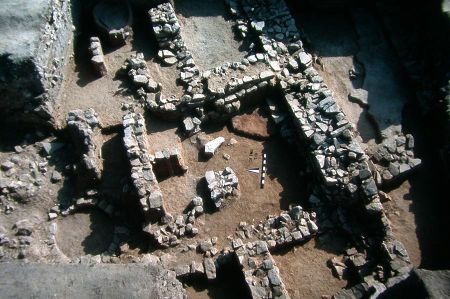 As part of a project initiated by the University of Ankara, the approximately two-thousand year old port from Roman times is to be revived. The former port of the city of Limantepe is to be rebuilt in Urla. The boats, loading cranes and granaries that were built and used by the Romans will be reproduced according to their original architecture. After the construction work, visitors to the harbour will be able to take a trip on Roman ships. Professor Hayat Erkanal, the founder of Ankara University's Underwater Archeology Research and Application Centre (ANKÜSAM) and head of the Limantepe excavation project, said: "This project is the first of its kind in the world. We have already started manufacturing the boats. With the We will begin detailed construction work within a year."
As part of a project initiated by the University of Ankara, the approximately two-thousand year old port from Roman times is to be revived. The former port of the city of Limantepe is to be rebuilt in Urla. The boats, loading cranes and granaries that were built and used by the Romans will be reproduced according to their original architecture. After the construction work, visitors to the harbour will be able to take a trip on Roman ships. Professor Hayat Erkanal, the founder of Ankara University's Underwater Archeology Research and Application Centre (ANKÜSAM) and head of the Limantepe excavation project, said: "This project is the first of its kind in the world. We have already started manufacturing the boats. With the We will begin detailed construction work within a year."
The project, which will cover a large area of the municipality of Urla, will also have storage rooms comparable to those in Roman times and at least two boats from Roman times, so that the transport and storage of goods can be replicated. Although archaeologists know that there was also a church near the port, there is no thought of rebuilding the church as it would not be specific to the port's Roman period. The aim of the two archaeologists from Ankara University and the municipality is to recreate "living" tours for local and foreign tourists in the port's warehouses.
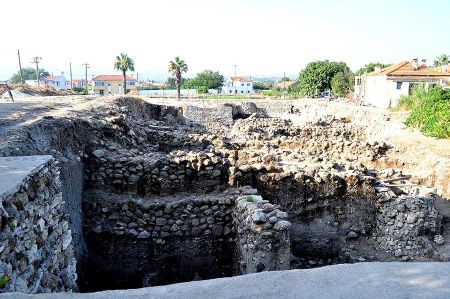 Ankara University Chancellor Erkan Ibis said the port's reconstruction is a touchstone for Turkish tourism. He emphasized that the revitalized environment should reflect the Roman era in the port exactly as it once was: "Ankara University has always been a valued partner in cultural projects. Here we reflect the same port that was built by the Romans before 2000 Years ago. All tools, boats, cranes and shops will be rebuilt, faithful to their originals. This is a very important project for Ankara University as well as for Turkish tourism."
Ankara University Chancellor Erkan Ibis said the port's reconstruction is a touchstone for Turkish tourism. He emphasized that the revitalized environment should reflect the Roman era in the port exactly as it once was: "Ankara University has always been a valued partner in cultural projects. Here we reflect the same port that was built by the Romans before 2000 Years ago. All tools, boats, cranes and shops will be rebuilt, faithful to their originals. This is a very important project for Ankara University as well as for Turkish tourism."
It will be interesting to see whether the replicas are actual replicas, perhaps even using materials from Roman times, or whether it will be a Roman Disneyland. We will keep this topic in mind.
Please read as well:
Symbols of sanctuary Göbekli Tepe the first characters?
Bosnian War and Destruction of the Stari most
